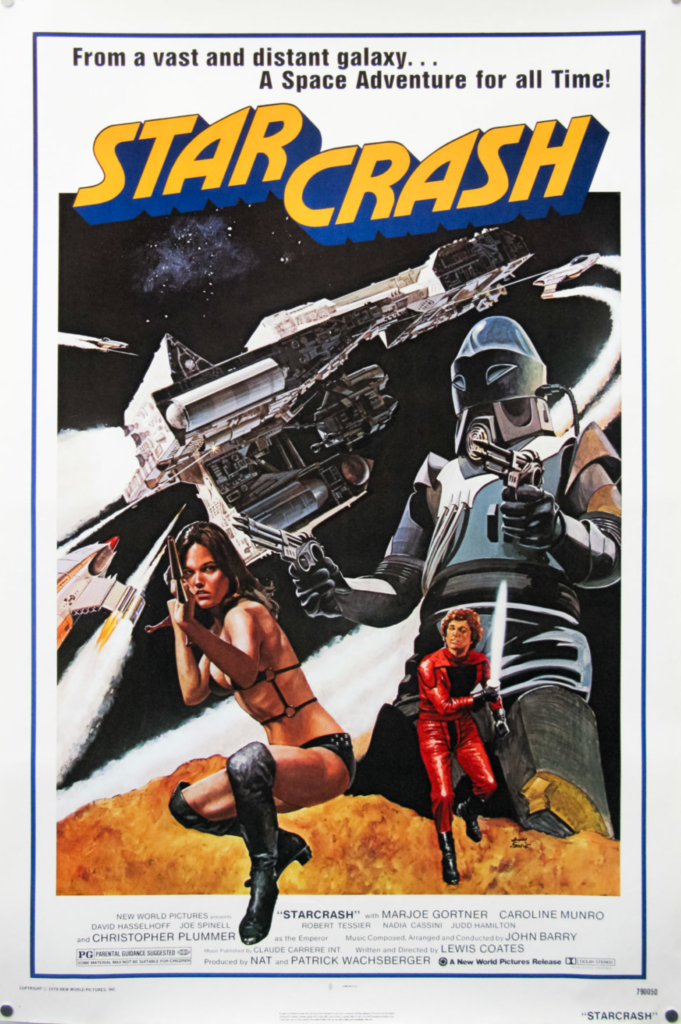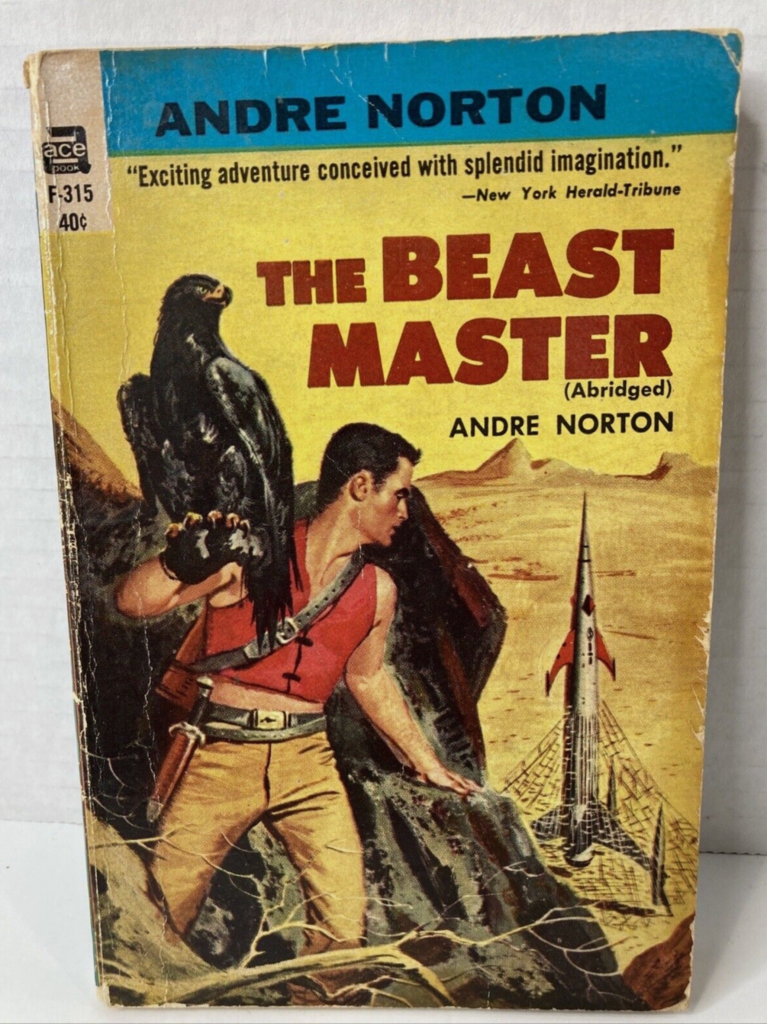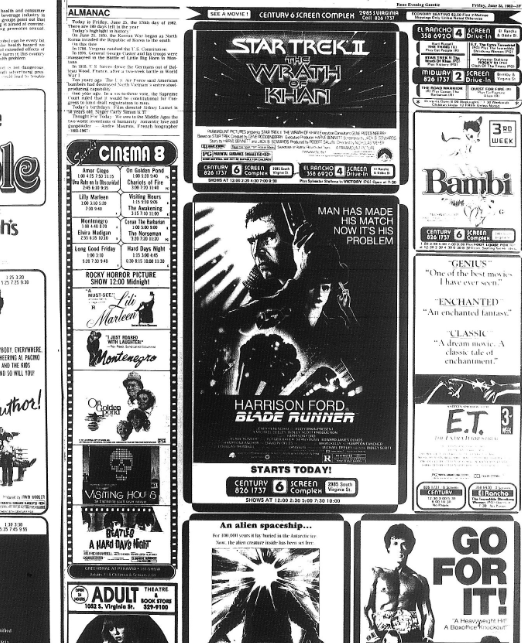| Michael Popham |

Beastmaster plays at the Trylon Cinema from Friday, April 12th, through Sunday, April 14th. Visit trylon.org for tickets and more information.
George Fucking Lucas
I was 12 years old when I first saw Star Wars at the Mann Theater on Hennepin Avenue. It was the summer of 1977 and the movie hit me like a gravel truck. I had never seen anything like it before, and my friends and I agreed that there was no way it could ever be topped. We had been thrown in media res (not that we used that term) into a universe that seemed to already exist, that was fully fleshed out and inhabited. This was a film that started with a furious space battle that, in any other sci-fi flick, would have been held back until the last reel. There was no way, we told each other, you could cram any more excitement into a single movie.
We saw it again and again, shoving our crumpled dollar bills into the hands of jaded box office attendants.
Unbeknownst to us, every executive in Hollywood wanted those crumpled dollar bills for themselves. They wanted us to go see what they believed (or desperately hoped, anyway) would be the next Star Wars, but there was a problem: being of our parent’s generation, they didn’t understand Star Wars.
Like, at all.
So they just decided to throw money at anything that kinda looked like Star Wars. Kids can’t tell the difference, right? Just put some ray guns and robots into it, they’ll love it.
The resulting cinematic fountain of blood was a ghastly thing to behold. Low-budget ripoffs like Star Crash and Message from Space died horribly at the box office; sci-fi franchises long dead or dormant (Flash Gordon, Buck Rogers, Star Trek) were resuscitated and forced to stagger, zombie-like, into theaters; wretched homunculi twitched on studio operating tables, stitched together from half-baked scripts and unholy infusions of cash, resulting in lumbering grotesqueries like Disney’s The Black Hole, Universal’s Battlestar Galactica, MGM’s The Ice Pirates and ITC’s Saturn 3. Even Frank Herbert’s shroom-inspired weirdo space opera Dune, widely regarded as unfilmable, was rushed into production by Dino de Laurentis. “Unfilmable?” de Laurentis was not quoted as saying, at least not out loud. “Fuck you—with enough money anything is filmable.”

Promotional poster for Star Crash (1978)
All those captains of industry watched aghast as one film after another dropped in their tracks like barnyard animals in a slaughterhouse, money spurting in every direction before swirling down the oubliette. As it turned out, kids didn’t flock to see Maximillian Schell playing an outer-space sociopath who lobotomized the crew of his spaceship and used them as robotic slaves; Kirk Douglas’s May-December romance with Farrah Fawcett on a frozen space station didn’t get youngsters to line up around the block; nor were children likely to race to the store to buy the Dune coloring book or load up on Sardaukar Shock Trooper Action Figures.
But the executives didn’t give up; in fact, they haven’t given up to this day. Studios are still trying to hatch the next Star Wars. Even the Star Wars franchise is trying to hatch the next Star Wars. Because apparently a lot of kids who loved the original movies grew up, but somehow also didn’t grow up; they wanted nothing new, they just wanted more, and so decades later we were inflicted with movies that answered all the burning questions we never asked when we were kids, like “How did Han Solo get his name?”
And franchises, which used to just end when they weren’t fun anymore, aren’t allowed to end at all. The septuagenarian Ghostbusters are forced to strap the proton packs onto their aching limbs and confront the big bad ghost one last time, another last time, always one more last time; they are not allowed to retire to the sunnier precincts of our memories.
Why not? Because of George Fucking Lucas, that’s why not. But I digress.
The Epic Fantasy Pipeline
Some producers in the late 1970s, it must be said, were savvier than others. They recognized that despite all the hardware, Star Wars wasn’t science fiction at all. It was epic fantasy.
Epic fantasy was a literary subgenre that had lain dormant for decades, but it was enjoying a comeback in the 1970s. J.R.R. Tolkien’s Lord of the Rings trilogy, completed in 1949, had become trendy on college campuses, leading to a torrent of knockoff fantasy literature and the original Dungeons and Dragons role-playing game, which published its first edition in 1975.
Robert E. Howard’s lurid tales of Conan the Barbarian, written for the pulp magazines between 1932 and his death in 1936, had been republished in paperback form by Lancer / Ace for a decade starting in the late 1960s, and many new Conan adventures penned by others provided fresh content for bookstores over the next decade. Fritz Lieber’s Fafhrd and the Gray Mouser series, originally published in the 1930s and 40s, enjoyed a similar renaissance.
It’s likely that Don Coscarelli, who had written and directed the left-field horror hit Phantasm in 1979, had these influences in the back of his mind when he said he wanted to option a sci-fi novel for his next project. For Hollywood at the time “sci-fi” meant “sweaty-palmed 12-year-olds with crumpled dollar bills.” So they said “sure.”
Coscarelli chose to option The Beast Master (1959), a sci-fi novel written for the YA market by a woman named Alice Mary Norton. Because her readers were primarily teenage boys, she published under the more masculine pseudonym Andre Norton. Norton penned a number of successful SF adventure novels in the 1950s and 60s, including The Time Traders, Storm Over Warlock and Daybreak: 2250 A.D.

A 1961 paperback edition of The Beast Master, published by Ace. Cover art by Ed Valigursky.
But The Beast Master was by far her most popular novel. It told the story of Navajo ex-soldier Hosteen Storm, who seeks revenge on a distant frontier planet after Earth is made uninhabitable by an interstellar war. Hosteen is aided in his quest by several animals to whom he is connected telepathically.
Like most of Norton’s novels, The Beast Master was a thinly-disguised western, with the main character proving his mettle on an alien frontier, but it didn’t really matter. As it turned out, the title, the telepathic link to animals and the protagonist’s thirst for revenge were the only things to survive the adaptation. Coscarelli made so many wholesale changes to the narrative that Norton asked for her name to be dropped from the credits.
The movie that Coscarelli wrote was a sword-and-sorcery yarn set in the mythical kingdom of Aruk. High priest Maax (Rip Torn), who dreams of one day being ruler, hears a prophecy that he will one day be killed by the unborn son of King Zed. Knowing the child must die (and apparently never having seen a movie with a prophecy in it before) Maax foolishly outsources his dirty work to some knucklehead or other, which results in the child surviving to be raised as a humble and pure-hearted lad in the village of Emur.
This is young Dar, played by Marc Singer, and he grows up to be a capable fighter who not only looks great in a loincloth, but is also able to communicate with animals telepathically. Left as the sole survivor after barbarians allied with Maax destroy the village, Dar swears revenge and travels to the capitol city to dish it out.
As he hurries to meet his destiny as The Chosen One™, young Dar has many cheesy but good-hearted adventures. He befriends an eagle, a black tiger and a pair of mischievous ferrets, and he also frees and befriends a beautiful slave girl named Kiri (Tanya Roberts). Beautiful slave girls, it should be noted, are seemingly everywhere in fantasy stories, and they are in constant need of being freed and/or befriended.
Hey Beastmaster’s On
The summer of 1982 was an unusual one for the U.S. box office, stuffed with more sci-fi and fantasy offerings than you could shake a wookie at. E.T. the Extraterrestrial, Tron, Star Trek II: the Wrath of Khan, The Road Warrior, The Thing, Blade Runner and Conan the Barbarian all debuted before the 4th of July weekend. It wasn’t until August that The Beastmaster made its way into theaters, arriving just as the party was winding down, and it played to mostly empty auditoriums. Maybe the cinematic embarrassment of riches that summer made it seem less appealing to filmgoers; or maybe Conan the Barbarian had already slaked the thirst of epic fantasy fans. The Beastmaster was quickly forgotten.

The summer of 1982: crammed to the gills with sci-fi and fantasy. from The Reno Evening Gazette, Friday, June 25, 1982. Page 3F
But it didn’t remain forgotten for long. New avenues for distribution were opening up in the early 1980s. Video rental shops were springing up everywhere, as more Americans bought home videotape machines. New VCR owners pigged out on the novelty of seeing movies on demand, often renting three or four titles at a go; and they were far more willing to take a chance on a three-day tape rental than they would have on a theater ticket. The VCR boom coincided with the rapid expansion of cable TV to small and mid-sized towns across America, and premium cable channels like Cinemax and HBO offered a second chance for movies to be watched, commercial-free, at home.
These premium channels were so hungry for content they often played the same new title dozens of times over the course of a single month. The Beastmaster turned up so frequently on HBO in the early 1980s that a common joke was that the channel’s initials stood for “Hey, Beastmaster’s On”.
It continued to be a profitable title in video stores, which eventually led to two direct-to-video sequels: Beastmaster 2: Through the Portal of Time (1991), and Beastmaster III: The Eye of Braxus (1996), both of which returned Marc Singer to the role of Dar. A syndicated television series, BeastMaster, turned up in 1999 in the wake of the success of Sam Raimi’s Hercules: The Legendary Journeys and its spinoff Xena: Warrior Princess. The TV version of Beastmaster put Daniel Goddard in the loincloth as Dar, and the series had a more eco-warrior spin—after all, Dar couldn’t be on a quest for revenge every episode. But it proved the staying power of Coscarelli’s concept.
In the modern era, it’s not unusual for movies that stumbled on their initial release to become hits on home video. But did The Beastmaster ever become a hit, even on home video?
Not really. It seems to occupy a liminal space, a movie that seemingly everyone has seen, but few spend much time thinking about at all. But whenever the movie comes up in conversation people always seem to have a soft spot for it. It’s cheesy, but it’s also a lot of fun.
Fun is a very intangible ingredient, perhaps the most underrated ingredient in the movie business. Fun was what kept us buying tickets to Star Wars again and again in the summer of 1977. It was what all those post-Star Wars sci-fi movies should have offered but didn’t. And it is what The Beastmaster offered way back then, and still offers today.
Edited by Olga Tchepikova-Treon

I’m just dropping in because I can never resist a chance to bring up the 1983 TV series “Manimal”, which ran for 8 episodes in 1983 and starred Simon MacCorkindale and Melody Anderson (Flash Gordon).